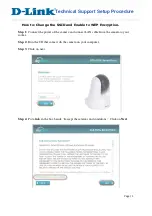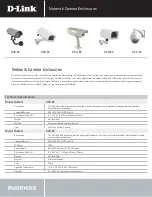
AM-HX-IOM AA December 2018
3
®
For cabinet installations, reference DataSafe
®
HX Battery Cabinet Systems
Range Summary (AM-DSCAB-RS).
If provided, intercell connector covers should be installed after completing the
intercell connections.
Attention: Unless otherwise noted, battery racks and cabinets should not be
transported with rigid intercell connectors in place.
■
■
Torque
Tighten the M6 connector bolts between 60 to 88 in-lbs (6.8 to 10 N•m). A
loose connector can cause problems in charger adjustment, erratic battery
performance, possible damage to the battery and/or personal injury.
4.
Cells in Parallel Strings
When utilizing a constant voltage charger, ensure that the connections from
the charger at the end of each string have the same electrical resistance.
To reduce the risk of current imbalance, the number of parallel strings in any
system should be limited to six.
5. Charging
■
■
Commissioning Charge
Upon installation, perform a Commissioning Charge on the battery with a
constant voltage charger by either:
- Charging at 2.40 Vpc at 77°F (25°C) for 24 hours or
- Charging at 2.35 Vpc at 77°F (25°C) for 72 hours.
Follow the Maximum Charging Current values shown in Table 1. After
completion of the Commissioning Charge at either level, reduce the charger to
the appropriate Float Charge level for the battery temperature shown in the Float
Charge Section. A discharge test can be given after float charging for 24 hours.
■
■
Float Voltage
The float/charge voltage is 2.27 Vpc at 77°F (25°C).
When the average ambient temperature deviates ± 9°F (5°C) or more from the
reference, it is necessary to adjust the float voltage as follows:
2.33 to 2.36 Vpc at 32°F (0°C)
2.30 to 2.33 Vpc at 50°F (10°C)
2.27 to 2.30 Vpc at 68°F (20°C)
2.25 to 2.28 Vpc at 77°F (25°C) (reference)
2.23 to 2.26 Vpc at 86°F (30°C)
2.22 to 2.25 Vpc at 95°F (35°C)
■
■
Equalize Charge
The battery can be charged at an elevated voltage of 2.40 Vpc (14.4 Volts
for the battery) for the purpose of an equalize charge or as part of a 2-step
recharge profile to reduce charge time. Charge time at 2.40V should not
exceed 16 hours and the current limits in Table 1 must be followed.
■
■
Ripple Current
Unacceptable levels of ripple current from the charger or the load can cause
permanent damage and a reduction in service life. It is recommended to limit
the continuous ripple current to the values of the Table 1 (in amperes).
Table 1
■
■
Charging Current
The recommended charging method for DataSafe HX batteries is current
limited, constant voltage charging. Refer to Table 1 for the current limits for
each battery model.
■
■
State of Charge
The battery state of charge can be determined approximately by measuring
the open circuit voltage after the battery has been at rest for a minimum of 24
hours at 77°F (25°C). See Table 2.
Table 2
State of Charge
Voltage per Cell
Voltage per Battery
100%
2.12 to 2.14
12.72 to 12.84
80%
2.09 to 2.11
12.54 to 12.66
60%
2.05 to 2.08
12.30 to 12.48
40%
2.01 to 2.04
12.06 to 12.24
20%
1.97 to 2.00
11.82 to 12.00
6. Discharging
■
■
End of Discharge Voltage
The end of discharge voltage must be limited to a minimum value of 1.60 Vpc.
A protecting system shall have to be installed to prevent deep discharge.
■
■
Discharged Cells
DataSafe HX batteries must not be left in a discharged condition after
supplying the load, but must be immediately returned to float recharge mode.
Failure to observe these conditions may result in greatly reduced service life
and unreliability.
■
■
Accidental Deep Discharge
When the battery is completely discharged, the sulfuric acid is completely
absorbed and the remaining electrolyte consists only of water.
At this point, the sulfation of the plates is at its maximum, considerably
increasing the cell’s internal resistance.
Important notice: This type of deep discharge will provoke a premature
deterioration of the battery and a noticeable effect on life expectancy.
For temperature correction factors for use when load testing a battery,
please refer to the Temperature Correction factor tables published in
IEEE Standard 1188, latest version.
7.
Maintenance and Records
DataSafe HX batteries are virtually maintenance-free, sealed, lead acid
batteries and need no water addition. These batteries are equipped with self-
resealing, flame-arresting safety vents.
The containers and lids shall be kept dry and free from dust. Cleaning must
be done with a cotton cloth dampened with water only. Check monthly that
total voltage at battery terminals, while on float, is (N x 2.25 to 2.28 Vpc) for a
temperature of 77°F (25°C), (where N is the number of cells in the battery).
Every 12 months, read and record the following:
■
■
Individual battery voltages (in volts)
■
■
Cell-to-cell connection resistance (in ohms)
■
■
Terminal connection resistance (in ohms)
■
■
Ambient temperature in the immediate battery environment
Keep a logbook to record values, power outages, discharge tests, etc.
An autonomy check can be carried out once or twice a year.
The above record taking is the absolute minimum to protect the warranty. This
data will be required for any warranty claim made on the battery.
Battery Model
Maximum
Charging Current
(Amps)
Maximum Allowable
Ripple Current
(Amps RMS)
12HX205-FR
11.0
2.1
12HX300-FR
18.0
3.5
12HX330-FR
21.0
4.1
12HX400-FR
24.0
4.7
12HX505-FR
30.0
5.9
12HX540-FR
31.0
6.1






















